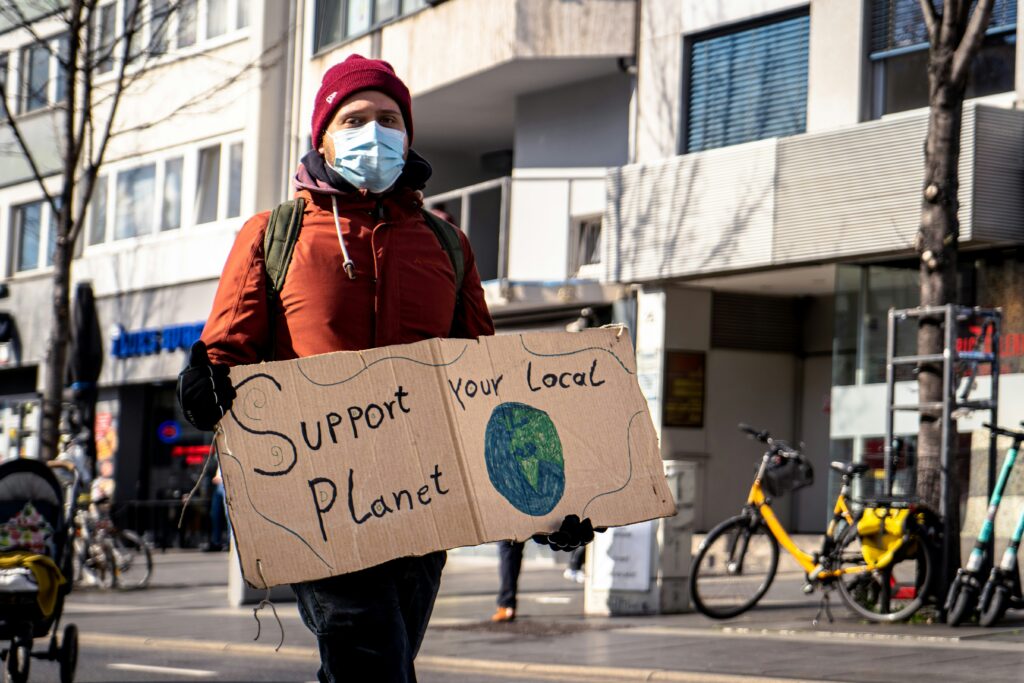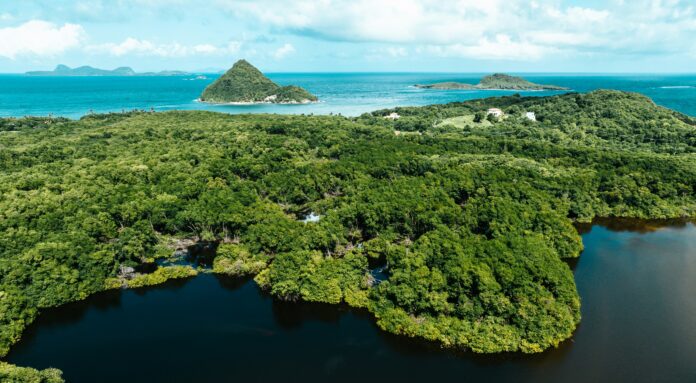In recent years, climate change conversations have largely focused on the urgent need to reduce carbon emissions and prevent future global warming. But as the reality of our changing planet becomes undeniable, there’s an increasing emphasis on adaptation—the process of adjusting to life in a warming world. As severe weather events, rising sea levels, and unpredictable climate patterns become more common, communities around the globe are implementing innovative solutions to not only survive but thrive. This article highlights some of the groundbreaking strategies that cities and rural areas are using to adapt to climate change, focusing on urban green spaces and climate-resilient agriculture.
1. Urban Green Spaces: A Breath of Fresh Air for Cities
Cities are particularly vulnerable to the effects of climate change, such as heatwaves, flooding, and poor air quality. Urban areas often suffer from the urban heat island effect, where concrete, asphalt, and buildings trap heat, raising temperatures significantly compared to rural surroundings. In response, many cities are investing in green infrastructure to mitigate these effects and improve the overall quality of life.
Green roofs, urban forests, and community gardens are becoming more prevalent as cities recognize the multiple benefits they offer. For instance, green roofs help insulate buildings, reducing the need for air conditioning, while also absorbing rainwater to prevent flooding. Urban forests and tree-lined streets not only provide shade but also improve air quality by capturing pollutants and releasing oxygen.
One standout example is Singapore, often referred to as the “City in a Garden.” The city-state has integrated lush greenery throughout its urban landscape, from vertical gardens on skyscrapers to tree-filled parks, all of which help reduce temperatures and improve residents’ well-being. Another inspiring case is Rotterdam in the Netherlands, where floating parks and water plazas are designed to absorb excess rainwater during storms, making the city more resilient to flooding.
2. Climate-Resilient Agriculture: Feeding the World Amid Uncertainty
The agricultural sector is particularly vulnerable to climate change, with unpredictable weather patterns, droughts, and soil degradation threatening global food security. In response, farmers and agricultural innovators are turning to climate-resilient techniques to ensure crops can thrive even in adverse conditions.
Drought-resistant crops, regenerative farming practices, and smart irrigation systems are being adopted to make agriculture more sustainable. For instance, farmers in India are experimenting with drought-resistant varieties of rice and millet to combat water scarcity. Meanwhile, Israel, a country known for its arid climate, has pioneered the use of drip irrigation, which minimizes water usage by delivering water directly to the roots of plants.
Another exciting innovation is vertical farming, where crops are grown indoors in stacked layers using LED lighting and hydroponics. This method uses up to 95% less water than traditional farming and requires no soil, making it a viable option in urban environments where space and resources are limited. Companies like AeroFarms in the United States are already producing leafy greens year-round using this technology, showcasing how climate-resilient agriculture can contribute to food security.
3. Community-Led Solutions: Empowering Local Adaptation Efforts
Adaptation isn’t just about large-scale infrastructure projects; often, the most impactful solutions come from the communities themselves. Across the world, local groups are developing innovative approaches to protect their environments and livelihoods.
In the Bangladeshi delta, where flooding is a constant threat, communities have built floating gardens made from water hyacinth and bamboo. These gardens can rise and fall with water levels, allowing locals to continue growing crops even during floods. In the Pacific Islands, where sea levels are encroaching on coastal villages, communities are experimenting with “climate migration” plans, relocating entire villages further inland.
In the United States, New Orleans has invested heavily in water management systems after the devastation of Hurricane Katrina. The city has created water parks, rain gardens, and permeable pavement to absorb stormwater, reducing the risk of flooding. By integrating nature-based solutions into urban planning, New Orleans is turning water into an asset rather than a threat.
4. Balancing Adaptation and Equity: Ensuring No One Is Left Behind
While the need for climate adaptation is clear, it’s crucial that these efforts are both inclusive and equitable. Often, marginalized communities bear the brunt of climate change impacts and have fewer resources to adapt. Addressing this imbalance requires ensuring that adaptation projects are accessible to all, especially in low-income areas.
For example, in Mexico City, green roofs have been installed in social housing projects to help residents cope with extreme heat. In Kenya, community-led reforestation projects are not only helping to restore degraded lands but also providing jobs and income for local women. These initiatives show that adaptation can go hand-in-hand with social justice, empowering vulnerable communities to become more resilient.

5. The Road Ahead: Innovating for a Resilient Future
As climate change accelerates, the urgency for adaptation continues to grow. The solutions highlighted in this article are just a glimpse of the many ways communities and innovators are rising to the challenge. However, scaling these efforts will require collaboration between governments, the private sector, and civil society.
Investing in climate adaptation isn’t just about protecting communities; it’s also about seizing opportunities to create greener, more sustainable ways of living. By embracing innovation and putting people at the center of adaptation efforts, we can build a world that is not only resilient to climate change but also more equitable and prosperous.
In the end, adapting to climate change is not just about survival; it’s about thriving in a new reality. As communities around the world demonstrate, it’s possible to turn the challenges of climate change into opportunities for growth, innovation, and resilience.
Photo by Hugh Whyte on Unsplash
Views: 6






